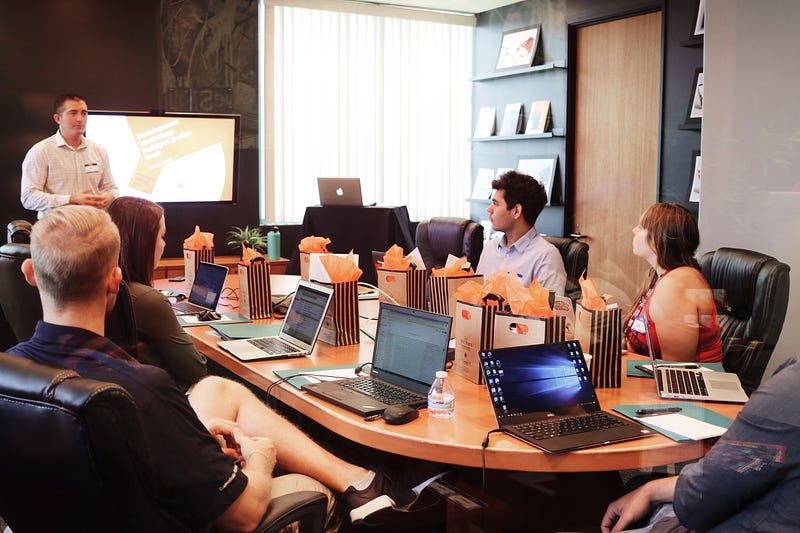8 Ways To Reduce The Learning Curve For New Team Members
8 Ways To Reduce The Learning Curve For New Team Members
Give your teams the tools and resources that they need to thrive.
The learning curve for new team members is one of the biggest challenges any business faces when expanding.
This challenge is amplified when teams are either deskless or remote, or both.
In order to reduce this onboarding challenge, businesses should consider a variety of strategies, from better training and upskilling programs to empowering remote employees.
With the recent developments in knowledge management and learning systems, the process can be streamlined and the learning curve for new hires and trainees can be reduced.

When onboarding new team members, there are a few things you can do and basic systems that you can set up to help reduce the learning curve.
Assuming your new team member has the basic skillset required for the job, there are still a few things you can do to help them transition into their role.
8 Ways to Reduce the Learning Curve of New Team Members
Here are a few ways to do this:
- Give them a clear overview of the company structure and their role within it. If they can understand where they fit in, and how they will be contributing to the company reaching its goals, they can begin to see the value of their position and contribution. This can leave new team members with a stronger feeling of purpose and contribution.
- Set up regular check-ins and feedback sessions, so they can understand how they are progressing and where they need to improve. Use learning data and progress information where possible to monitor how they are progressing and where they are struggling. This will help you work with them to get the most out of the training time.
- Assign them a buddy or mentor, who can help them with any questions or issues they have. This can be the training manager or a fellow team member they will be working with and learning from. To ensure the learning curve is kept to a minimum, they need to be able to turn to someone if they’re in doubt or unsure about something.
- Encourage them to ask questions and get involved in team meetings and discussions. Provide them with a place from which they can ask questions and engage with training material. Ensure they feel welcomed and part of the team from the get-go.
- Put together a comprehensive training plan, covering all the essential skills and knowledge they will need for their role. Lay out a roadmap for them upfront to help them understand what their learning journey would be from day 1. This is something which can be extended into the longer term to help them with their career development as well.
- Provide clear and concise training materials. This could be an employee handbook, an online resource center, or even just a list of helpful links. By building out your company’s knowledge hub, you can provide them with a consolidated location to find all of their resources and learning material. Making this available online and accessible on mobile will remove the barriers to learning and training.
- Share background company information. By sharing information about your company’s culture, values, and goals, you can help new hires feel more comfortable and confident in their roles.
- Set realistic expectations. It’s important to let new team members know what is expected of them and what they can expect from you in their first few weeks on the job. Sharing an outline of what they’re going to be covering during the onboarding process can help them understand what is to come.
By taking these steps, you can keep the learning curve to a minimum and help new team members hit the ground running and quickly become productive members of your team.

Conclusion
Reducing the learning curve for new team members can seem like a daunting task, but it doesn’t have to be.
By following these eight simple tips and supporting tools, you can make the transition smoother for everyone involved.
And, in the end, that will make your team stronger and more cohesive.
So what are you waiting for?
Start putting these tips into practice today and see how quickly your new team members adjust to their new roles.
Bonus — Training and Upskilling on Mobile Devices
There are more pieces to the puzzle as well. Many tools and systems out there can support the onboarding and upskilling process and further help to keep the learning curve to a minimum.
When it comes to reducing the learning curve for new team members, one of the most effective ways to make knowledge transfer smooth and the resources more accessible is to ensure that training and upskilling are possible on mobile devices.
This way, your team can learn at their own pace and have access to information and resources whenever they need them. For those that aren’t based at a desk or computer, it ensures that they can also benefit from digital training processes.
For frontline and deskless workforces, mobile training can make a huge difference in the development and onboarding of your teams.
Some tips for providing training and upskilling on mobile devices:
- Make sure all your company information and resources are easily accessible on mobile devices.
- Create bite-sized pieces of content that can be easily consumed on a mobile device.
- Ensure learning resources are organised in a way that they can be easily searched within the knowledge hub
- Use apps and software that are designed for mobile learning to improve the learning experience.
- Provide support 24/7 so team members can get help when they need it.
About Beeline:
Beeline is a science-backed learning platform designed to remove barriers to learning effectively. We help people take the direct path to their learning goals.
Manage your personal and professional learning, and manage learning and development within your organisation with Beeline. Monitor, assess and report on training and development progress with ease, and ensure you are achieving your objectives.
Easily and rapidly build your company learning and knowledge hub, and share resources effectively with remote and deskless teams with Beeline’s web and mobile applications.
Streamline your digital learning experience with Beeline, the new learning platform that allows you to collate all of your learning resources, mixed-media and notes into a structured learning pathway, for yourself or share with others.
Join hundreds of other learners and teams who are learning effectively right now!
Frequently Asked Questions (FAQs)
1 — What strategies can businesses implement to make the onboarding process more effective for remote and deskless team members?
Businesses can enhance onboarding for remote and deskless team members by developing clear company overviews, establishing regular check-ins, assigning mentors, and encouraging active participation in team meetings. This fosters a sense of belonging and purpose from the start.
2 — How can mobile training and upskilling be optimised to cater to the needs of a modern workforce, including frontline and deskless employees?
To optimize mobile training for the modern workforce, ensure that all learning materials are accessible on mobile devices, create bite-sized content for easy consumption, and utilize apps designed for mobile learning. This approach supports learning at one’s own pace and ensures accessibility for all employees, including those in frontline and deskless roles.
3 — In what ways can a digital learning platform, like Beeline, streamline the training and development process for organisations, ensuring that learning objectives are met efficiently?
Digital learning platforms like Beeline can streamline the training process by providing a centralised hub for learning materials, enabling easy monitoring and assessment of progress, and offering mobile compatibility. This approach ensures that training and development objectives are met efficiently, catering to the needs of diverse teams.